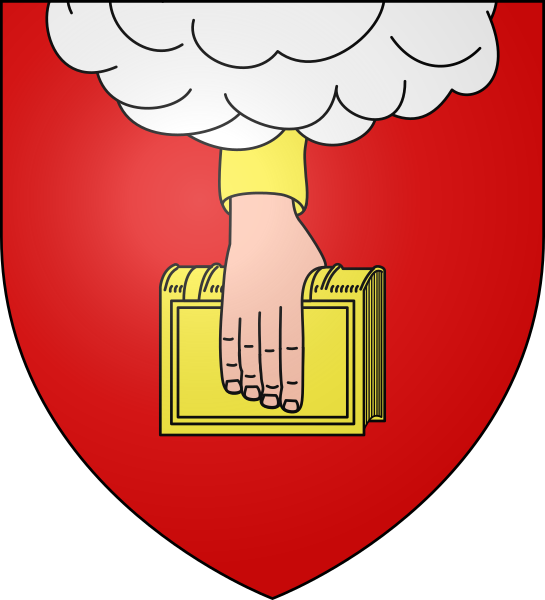The University of Franche-Comté has a somewhat special history compared to that of other universities. It is particularly known for having completely changed its name and city of affiliation during its existence. Originally the University of Franche-Comté was founded in 1423 in Dole, which was the capital of the region in the 13th century. It remained within the town of Dole and was known as the University of Dole until the 17th century, when France invaded the region under the reign of Louis XIV. The university was moved to Besançon which also became the new capital of the region, and the institution was renamed University of Franche-Comté.
1287: the attempt of Othon IV in Gray
Few know there were two attempts at creating the university in the first place. Othon IV first decided to establish a university in Gray in 1287, in his county, still independent of the kingdom of France and the Holy Roman Empire. The prince, which has struggled during all of his reign with aggressive neighbors and a weakening of his own personal power, likely understood that if he wanted to give back a real presence and existence to that power, he needed to support it with a solid administrative capacity as well as an organized domain. To this end, he made two ambitious charts[1], the one in August 1287 claiming he wanted to create in Gray, one of his cities, a studium generale[2] disposing of all the necessary components to function properly, students and teachers first of all, as well as extended privileges like personal freedom, exemption of military obligations and all personal financial charges. The choice of Grey appears curious, given it was far from being an important town. While the count was restricted from choosing Besançon, which was under the jurisdiction of the Holy Roman Empire, Gray was a small town isolated from the great centers of population and activity of the time. Othon IV decided apparently because of it was “given a denser population, more commercial and serene than that of the mountains around”[3]. However, he did not obtain authorization from the pope until 1291. By this time, his project had been revised to lower ambitions, the second chart only evoking “a study of clerics”, which would restrict it to theology rather than canon and civil law. In the end, only a small literary center would open in Gray.[4]
- [1]FOURNIER Michel, Les Status et Privilèges des Universités Françaises depuis leur fondation jusqu’en 1789, Paris, L.Larose et Forcel, 1892
- [2]Latin name given to universities in the Middle-Ages
- [3]GENEVRIER G. (2009). Une ville comtale de marche : Gray et son aire d’influence (fin XIII-début XVIe siècle) [Thèse de doctorat, Besançon]. Bibliothèque universitaire Lettres (Besançon)
- [4]BEAUNE, H., & D’ARBAUMONT, J. (1870). Les Universités de Franche-Comté : Gray, Dole, Besançon: documents inédits publiés avec une introduction historique. J. Marchand. p. XIII
- [5]THEUROT, J. (2020). Le pouvoir et le savoir. L’Université de Dole, une université pour les terres de Bourgogne, des années 1420 à 1479. EU de Dijon. p. 91
1423: Birth of the university of Dole

The second founding, and the successful one, was made under the authority of Phillipe III the Good. As soon as he took power of the principalities forming his domain after the 10 of September 1419, he considered the possibility of establishing a university for the same reasons as his predecessor Othon IV, train useful and knowledgeable men for his administration. The duke decided to create the university in Dole, capital of the county of Burgundy. The city of Dole had many characteristics which would make it attractive for the projects of Philippe: a central location within the Burgundian space, almost at the exact location of the boundary between the duchy and the county, a fluvial access through the Doubs, as well as, similarly to the terms used by Othon IV, “tranquil conditions” which would satisfy an atmosphere of study, with barely 800 habitations.t also hosted a parliament that Philippe just opened in March 1422, as well as a monastery of Cordeliers which could help with theological teaching.[5] The project faced the opposition of the town of Gray, which still remembered the project of Othon IV and tried to call upon the pope to obtain that the university created within its walls. The Roman chancellery, prudent, circumvented the difficulty by avoiding pronouncing in an absolute way on the designation of the city and contented itself with inserting in the erection bull that one would examine if Dole was not a more suitable place than Gray and the latter’s demand was rejected after long negotiations, though those negotiations were mostly factitious and only served to appease the revendications of the inhabitants of Gray.